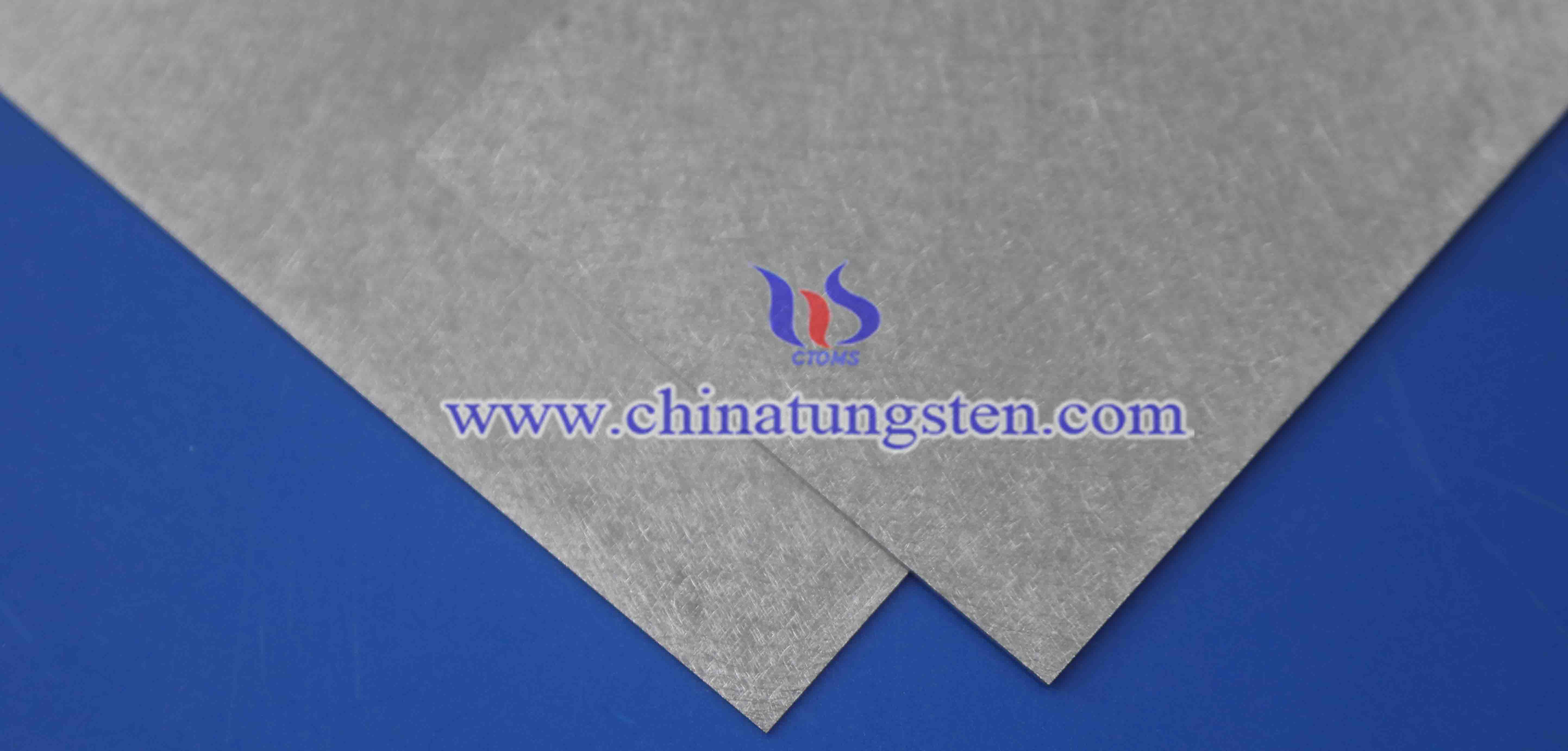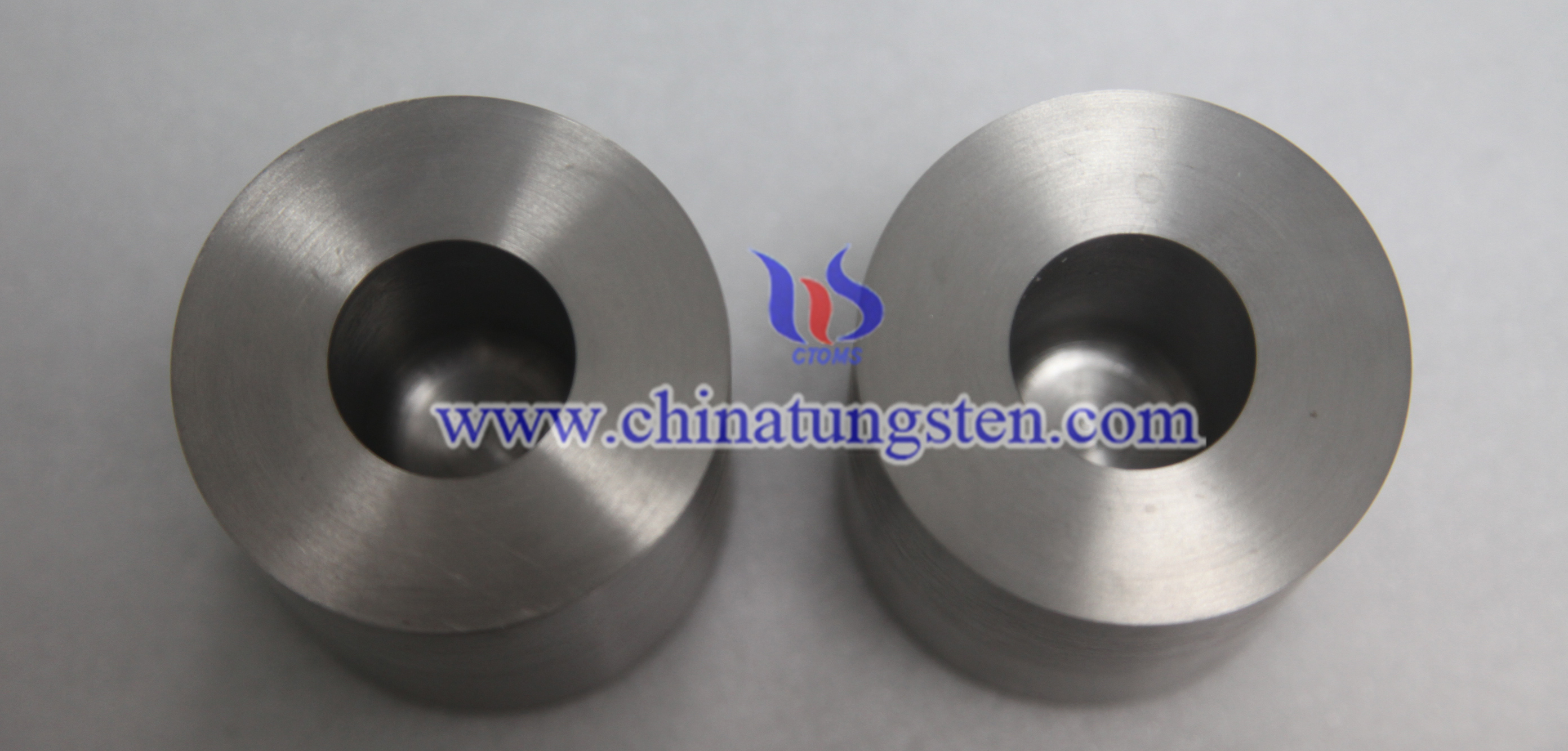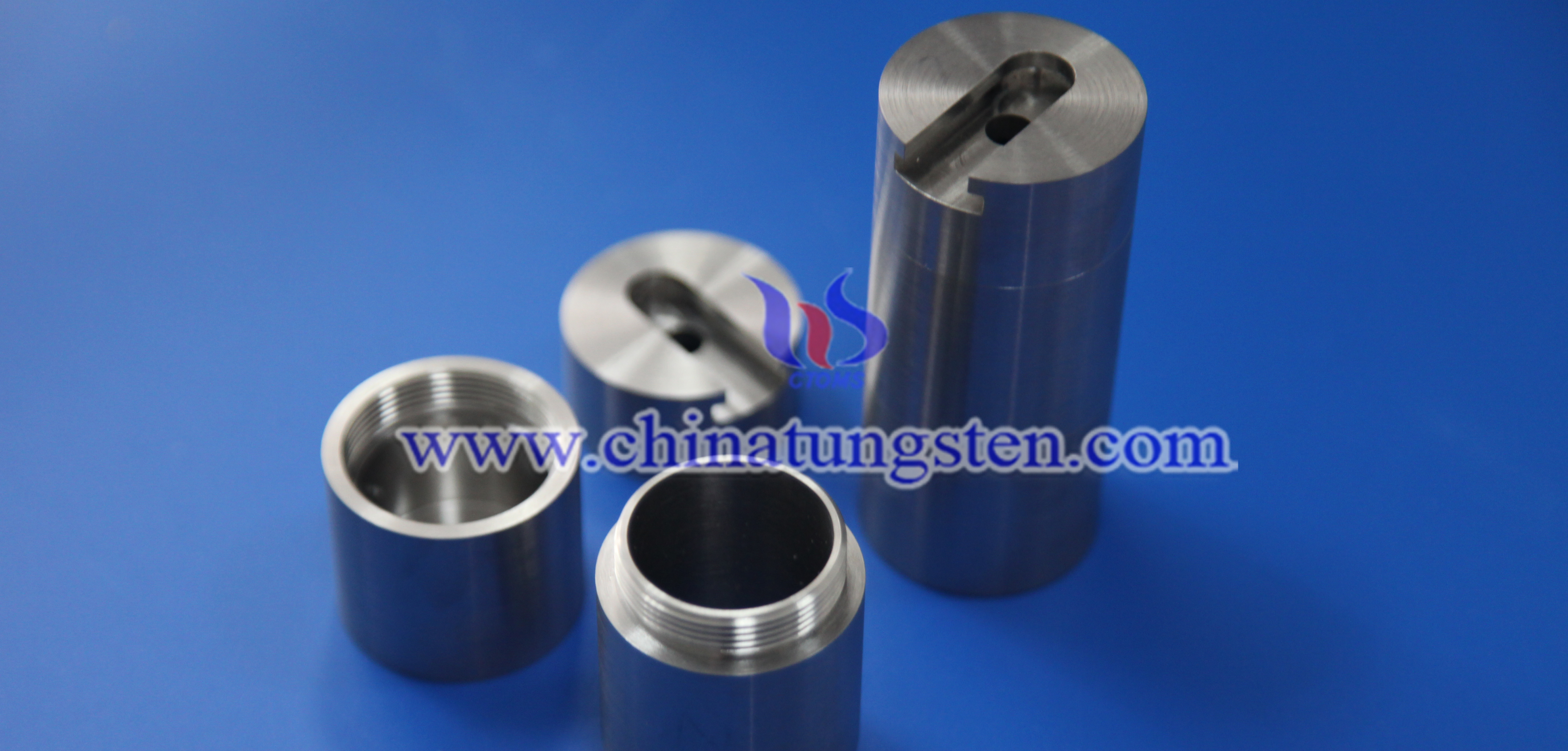Application of Tungsten and Tungsten Alloys in the Field of Nuclear Fusion Research
- Details
- Category: Tungsten Information
- Published on Friday, 02 August 2024 14:35
Abstract
Tungsten and its alloys, due to their excellent high-temperature performance, radiation resistance, and mechanical properties, have become ideal candidate materials for key components in nuclear fusion reactors. This paper reviews the progress of research on the application of tungsten and tungsten alloys in the field of nuclear fusion, focusing on their performance in plasma-material interactions, heat load tolerance, and radiation damage. By analyzing current research results and technical challenges, this paper proposes future research directions and development trends, providing a reference for promoting the application of tungsten and tungsten alloys in the field of nuclear fusion.
1. Introduction
1.1 Overview of Nuclear Fusion
Nuclear fusion is a process where light atomic nuclei combine to form heavier nuclei and release a tremendous amount of energy. It is considered an ideal source of future clean and sustainable energy. Unlike nuclear fission, nuclear fusion has advantages such as abundant fuel supply, high safety, and minimal environmental impact. However, achieving controlled nuclear fusion still faces a series of technical challenges, one of which is the selection and development of materials that can withstand extreme operating conditions.
1.2 Introduction to Tungsten and Tungsten Alloys
Tungsten (W) is a refractory metal with an extremely high melting point (3422°C), excellent thermal conductivity, and mechanical strength, along with good radiation resistance. These properties make tungsten a highly potential material for key locations in nuclear fusion reactors, such as the first wall, divertor, and structural components. Through alloying, the toughness and ductility of tungsten can be further improved, enhancing its overall performance. This paper will explore in detail the specific applications and research progress of tungsten and its alloys in nuclear fusion.

tungsten alloy sheet photo
2. Properties of Tungsten and Tungsten Alloys
2.1 Properties of Tungsten
Tungsten is the metal with the highest melting point in nature, with a melting point of 3422°C and a density of 19.25 g/cm³. Tungsten has good thermal conductivity (173 W/m·K) and high-temperature mechanical properties, maintaining stable structure and performance in high-temperature environments. Tungsten also has a low sputtering rate, making it suitable for plasma-interacting materials.
2.2 Properties of Tungsten Alloys
Through alloying, the mechanical and radiation resistance properties of tungsten can be significantly improved. Common tungsten alloys include tungsten-rhenium (W-Re) alloys and tungsten-titanium zirconium carbon (W-TiZrC) alloys. Tungsten-rhenium alloys, with the addition of a small amount of rhenium (typically 3-5%), can significantly enhance the ductility and radiation resistance of tungsten. Tungsten-titanium zirconium carbon alloys improve tungsten's thermal fatigue resistance and radiation resistance by adding titanium, zirconium, and carbon.
2.3 High-Temperature Performance of Tungsten and Tungsten Alloys
Tungsten and tungsten alloys exhibit excellent performance in high-temperature environments. Tungsten's high melting point allows it to remain stable under the extreme heat loads of nuclear fusion reactors. Tungsten-rhenium alloys have better toughness and creep resistance at high temperatures, making them suitable for components requiring high-temperature strength and ductility. Tungsten-titanium zirconium carbon alloys exhibit excellent thermal fatigue resistance at high temperatures, making them suitable for components that endure cyclic thermal shocks.

tungsten alloy shielding tank photo
3. Applications of Tungsten and Tungsten Alloys in Nuclear Fusion
3.1 Plasma-Material Interactions
In nuclear fusion reactors, first wall and divertor materials directly contact high-temperature plasma, needing to withstand extreme heat loads and particle bombardment. Tungsten, with its high melting point and low sputtering rate, is an ideal candidate material. However, tungsten tends to creep and become brittle at high temperatures, whereas tungsten alloys show better comprehensive performance in these aspects.
In nuclear fusion reactors, plasma-material interactions (PMI) significantly influence material selection and longevity. High-energy particles from the plasma bombard the material surface, leading to sputtering, heat loads, and material damage. Tungsten, due to its high melting point and low sputtering rate, has advantages for first wall and divertor materials. However, tungsten's tendency to creep and become brittle at high temperatures limits its application in high heat load areas. Alloying improves tungsten's brittleness and creep resistance, making tungsten alloys a promising alternative material.
3.2 Heat Load Tolerance
Key components of nuclear fusion reactors need to endure transient heat loads of up to tens of MW/m². Tungsten's high melting point and high thermal conductivity give it significant advantages under high heat load conditions. Through alloying, tungsten alloys can further improve their thermal fatigue resistance and thermal conductivity.
In nuclear fusion reactors, materials need to withstand transient heat loads of up to tens of MW/m² or even higher. Tungsten, with its high melting point and thermal conductivity, shows significant advantages under such high heat load conditions. However, tungsten becomes brittle at high temperatures, and alloying can improve its performance. Tungsten alloys demonstrate higher thermal conductivity and better thermal fatigue resistance at high temperatures, making them excellent performers under high heat load conditions.
3.3 Radiation Damage
High-energy neutron irradiation causes defects such as dislocations, vacancies, and bubbles in materials, severely affecting their mechanical properties and lifespan. Tungsten and molybdenum show excellent radiation resistance in high radiation environments, especially tungsten-molybdenum alloys that significantly reduce radiation embrittlement.
High-energy neutron irradiation in nuclear fusion reactors causes defects such as dislocations, vacancies, and bubbles in materials, affecting their mechanical properties and lifespan. Tungsten and molybdenum exhibit excellent radiation resistance in high radiation environments. Through alloying design, tungsten alloys can effectively reduce radiation embrittlement and enhance radiation resistance. The introduction of small amounts of rhenium or titanium can further enhance the radiation resistance of tungsten alloys.

tungsten alloy syringe shield photo
4. Research Progress on Tungsten and Tungsten Alloys
4.1 Microstructure Characterization
Recently, technologies such as electron microscopy, X-ray diffraction, and neutron diffraction have been used to conduct in-depth studies on the microstructure of tungsten and tungsten alloys. These studies reveal the effects of alloying on the grain structure, precipitates, and interface properties of materials, providing a theoretical basis for optimizing material performance.
Advances in modern materials science allow us to deeply understand the microstructure of tungsten and tungsten alloys. Using techniques such as electron microscopy (SEM and TEM), X-ray diffraction (XRD), and neutron diffraction, researchers can characterize the grain structure, precipitates, and interface properties of materials in detail. For example, alloying can adjust the grain size and grain boundary properties of tungsten alloys, improving their mechanical properties and radiation resistance.
4.2 Mechanical Property Studies
Tensile, compression, and creep experiments have been conducted to study the mechanical behavior of tungsten and tungsten alloys under different temperatures and stress conditions. The results show that tungsten alloys exhibit excellent strength and plasticity at high temperatures, effectively resisting high-temperature creep and thermal fatigue.
To evaluate the application performance of tungsten and tungsten alloys in nuclear fusion reactors, extensive mechanical property tests, including tensile, compression, and creep experiments, have been conducted. These experiments indicate that tungsten alloys maintain excellent strength and plasticity at high temperatures, effectively resisting high-temperature creep and thermal fatigue. Particularly, with the addition of small amounts of rhenium or titanium, the high-temperature mechanical properties of the alloys are further enhanced.
4.3 Radiation Resistance Studies
Irradiation experiments show that tungsten alloys exhibit lower irradiation hardening and embrittlement under high-energy neutron irradiation, especially after doping with small amounts of rhenium or titanium, significantly improving the material's radiation performance.
To understand the performance changes of tungsten alloys under high-energy neutron irradiation, irradiation experiments have been conducted. Results show that tungsten alloys exhibit lower irradiation hardening and embrittlement, especially after doping with small amounts of rhenium or titanium, significantly improving the material's radiation resistance. These studies provide crucial data support for the application of tungsten and tungsten alloys in nuclear fusion reactors.
4.4 Plasma Interaction Studies
Plasma-material interaction studies are essential for evaluating the actual performance of tungsten and tungsten alloys in nuclear fusion reactors. By simulating plasma environments and conducting plasma interaction experiments on tungsten and tungsten alloys, the material's behavior under actual working conditions can be understood.
- Plasma Sputtering: Studies show that tungsten and its alloys have a low sputtering yield, particularly under high-temperature conditions, where the sputtering rate of tungsten alloys is significantly lower than that of pure tungsten.
- Surface Morphology Changes: Using scanning electron microscopy (SEM) and atomic force microscopy (AFM) techniques, the surface morphology changes of tungsten and tungsten alloys under plasma environments have been observed, revealing that tungsten alloys exhibit better surface stability in high-temperature high-energy plasma environments.
- Plasma-Induced Defects: Using transmission electron microscopy (TEM) and X-ray diffraction (XRD) techniques, the defect formation mechanisms and evolution laws of tungsten and tungsten alloys in plasma environments have been studied, providing a theoretical basis for optimizing the material's resistance to plasma damage.

tungsten alloy tube photo
5. Challenges and Future Research Directions for Tungsten and Tungsten Alloys in Nuclear Fusion
5.1 Brittleness and Ductility Issues
Although tungsten and tungsten alloys have excellent high-temperature performance and radiation resistance, their brittleness and ductility issues remain the primary obstacles to their widespread application. Future research needs to further explore alloying and microstructural regulation strategies to improve the material's toughness and ductility.
- Alloy Design: By doping other metal elements (such as rhenium, titanium, hafnium, etc.), the toughness and ductility of the material can be improved without significantly lowering the melting point.
- Nanostructure Regulation: Utilizing nanocrystalline and nanocomposite material technologies can significantly enhance the toughness and radiation resistance of the material. By controlling grain size and grain boundary characteristics, the overall performance of the material can be optimized.
- Novel Composite Materials: Developing composite materials based on tungsten and tungsten alloys, such as tungsten fiber-reinforced molybdenum-based composites, can maintain high-temperature performance while improving toughness and ductility.
5.2 Radiation-Induced Defects
Radiation-induced defects and helium bubble issues are another major challenge for tungsten and tungsten alloys in nuclear fusion. Researchers need to study the formation mechanisms and evolution laws of radiation-induced defects and develop new anti-radiation alloys and defect repair technologies.
- Defect Formation Mechanism: By using molecular dynamics simulations and atomic-scale characterization techniques, researchers can study the formation mechanisms of radiation-induced defects, understanding the evolution of dislocations, vacancies, and bubbles.
- Anti-Radiation Alloys: Developing tungsten alloys doped with rare earth elements or other radiation-resistant elements to improve the material's anti-radiation performance. Particularly, introducing nanoscale precipitates can effectively passivate the formation of defects and helium bubbles.
- Defect Repair Technologies: Studying high-temperature annealing and thermomechanical treatment methods to repair radiation-induced defects and damage, thereby extending the material's service life.
5.3 Cost and Manufacturability
The high cost and manufacturing difficulty of tungsten and tungsten alloys are also limiting factors for their application in nuclear fusion reactors. Future research needs to explore manufacturing methods that maintain material performance while reducing costs and simplifying processes, enhancing the material's economic feasibility and manufacturability.
- Cost Optimization: By improving metallurgical processes and alloy composition design, the production cost of tungsten and tungsten alloys can be reduced. For example, developing more efficient powder metallurgy techniques and novel smelting processes.
- Manufacturing Processes: Studying advanced manufacturing processes suitable for tungsten and tungsten alloys, such as additive manufacturing (3D printing) and hot isostatic pressing (HIP) technologies, to improve the material's manufacturability and structural complexity.
- Large-Scale Production: Exploring industrial-scale production processes for tungsten and tungsten alloys to ensure their widespread application in nuclear fusion reactors is economically feasible.
5.4 Environmental Impact and Sustainability
In nuclear fusion reactors, the environmental impact and sustainability of materials are important factors to consider. The performance of tungsten and tungsten alloys in high-temperature and high-radiation environments affects not only the reactor's operational efficiency and lifespan but also environmental safety and resource utilization.
- Environmentally Friendly Materials: Researching tungsten alloy materials with low radioactivity and low environmental impact to reduce radioactive contamination during use.
- Resource Recycling and Reuse: Developing recycling and reuse technologies for tungsten and tungsten alloys to improve resource utilization rates and reduce resource waste.
- Lifecycle Assessment: Conducting lifecycle assessments of tungsten and tungsten alloy materials in nuclear fusion reactors, analyzing the environmental impact from production to disposal, providing a scientific basis for the sustainable application of materials.
6. Conclusion
Tungsten and tungsten alloys have broad application prospects in nuclear fusion reactors, particularly in high-temperature structural materials and plasma interaction components. Despite some technical challenges, continuous material optimization and the development of new technologies are expected to overcome these obstacles. Future research should continue to improve the comprehensive performance of materials, providing a solid material foundation for achieving controlled nuclear fusion.
The excellent performance of tungsten and tungsten alloys in high-temperature and high-radiation environments makes them ideal candidate materials for nuclear fusion reactors. Through alloy design, microstructural regulation, and advanced manufacturing processes, their performance can be further enhanced, overcoming current challenges. With the advancement of technology and deeper research, the application prospects of tungsten and tungsten alloys in the field of nuclear fusion will be broader, providing important support for achieving clean and efficient nuclear fusion energy.
- Tungsten Alloy Manufacturer & Supplier, Chinatungsten Online: www.tungsten-alloy.com
- Tungsten News & Prices of China Tungsten Industry Association: www.ctia.com.cn
- Molybdenum News & Price: news.molybdenum.com.cn
- Tel.: 86 592 5129696; Email: sales@chinatungsten.com



 sales@chinatungsten.com
sales@chinatungsten.com